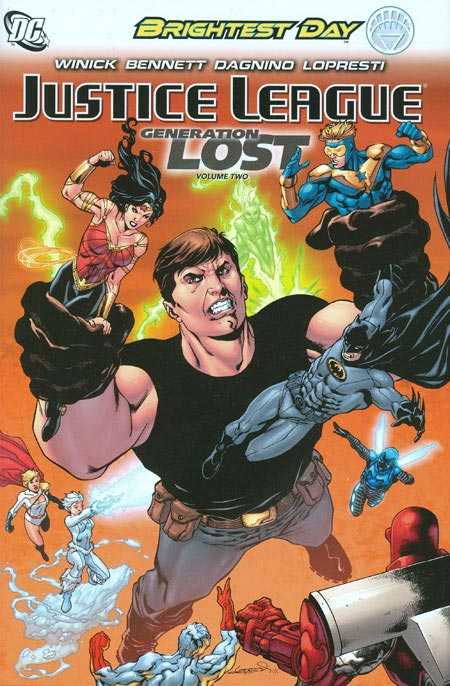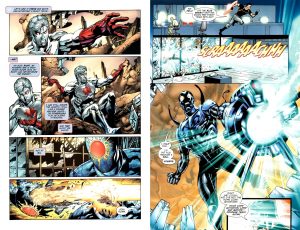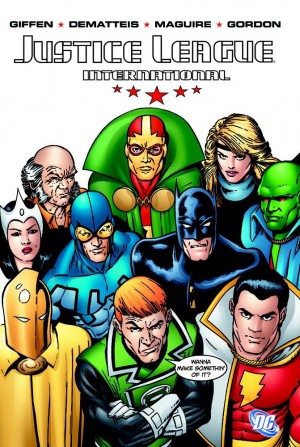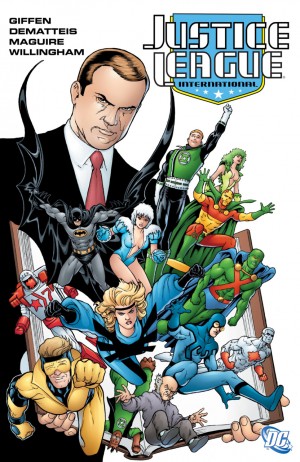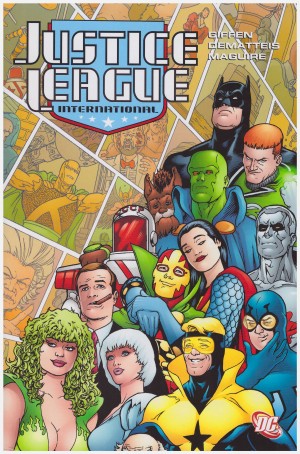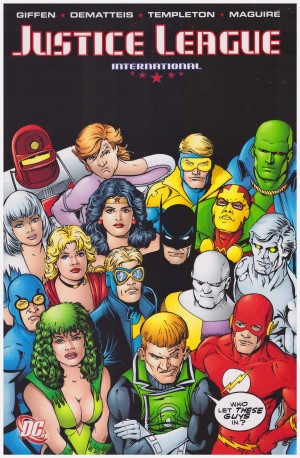Review by Frank Plowright
The set-up of Generation Lost is clever. Maxwell Lord controls events in a world where only a group of heroes, once the core of Justice League International, know of his existence. Because they all have limitations or bigger problems, it’s been easy to discredit them. Judd Winick opens this second volume dropping several shocks while concentrating on Captain Atom, including a neat explanation of something seen in volume one.
Toward the end of that, variations of the same story were being repeated. Winick circumvents that to some extent by firstly reversing the scenario and making Lord a more proactive villain, which leads to his escalating threats, and secondly by a deeper explanation of those repeated attacks being part of a bigger picture. It’s not entirely convincing in the light of later disclosures. Seasoned readers of superhero comics may well have pre-empted a big revelation about Lord just before halfway, but Winick includes plenty of other plot bombs not as signposted. One notable aspect is subtle, Winick hinting that Lord’s power to control minds can, in some circumstances, be considered a hindrance, as who’s going to believe him if they know what he can do? Three quarters of the way through there’s a very effective long dark night of the soul, leading to the finale.
Again, of the three artists it’s Aaron Lopresti who’s the most imaginative, but Joe Bennett’s designs and layouts are better than in the first book, although he’s back to accentuating female nipples by the end, which is sleazy. Fernando Dagnino’s pages still feature distorted bodies, but the layouts are what’s needed for a widescreen superhero action comic.
There are many nice little touches about Lost Generation, and the look into each member of the cast is appealing, even if the new Rocket Red is pretty well well the same as the version killed off years before. Once explained, the way the plot pulls together is clever, but the finale is disappointing on two counts. It is the big battle that might be expected, but the motivations are trite, and give it any thought and the ultimate revelation is that Lord could have headed straight to the end without much need for the preceding 23 chapters. Things pick up in the final dozen pages, featuring an end to the major menace and a form of postscript, after which there’s a plug for the Justice League International graphic novels featuring only Batman from the characters we’ve just seen.
Ultimately, however clever the set-up, Generation Lost works better with the smaller moments and investigations of the cast than it does as a world-shattering action plot. There’s enough to enjoy, but it’s not the blockbuster intended.
